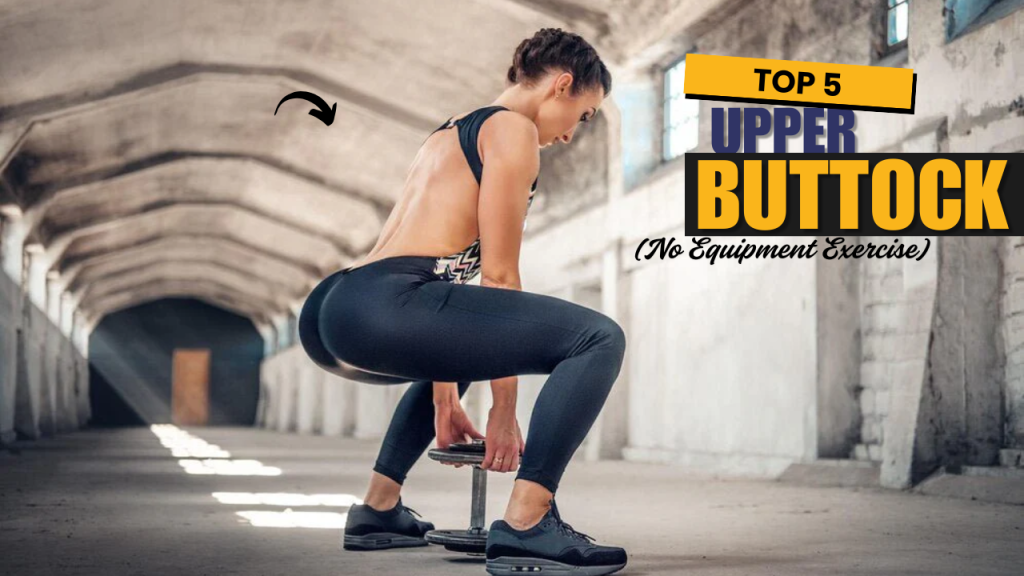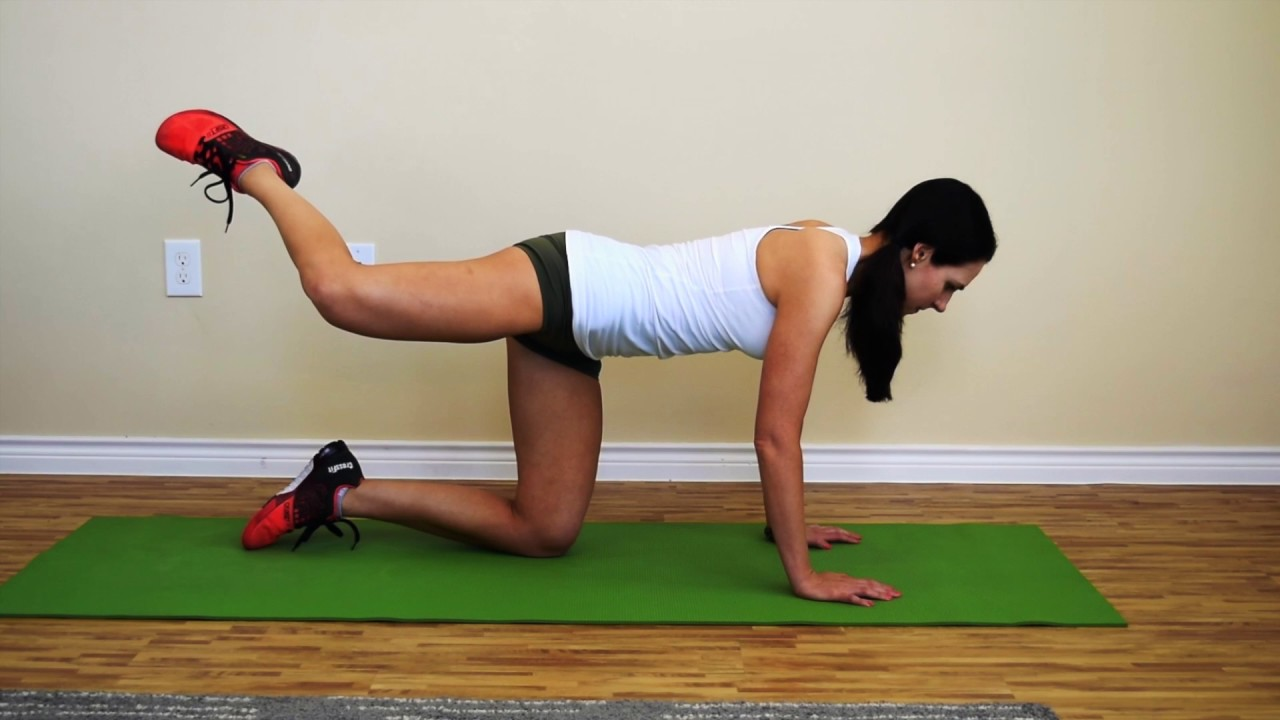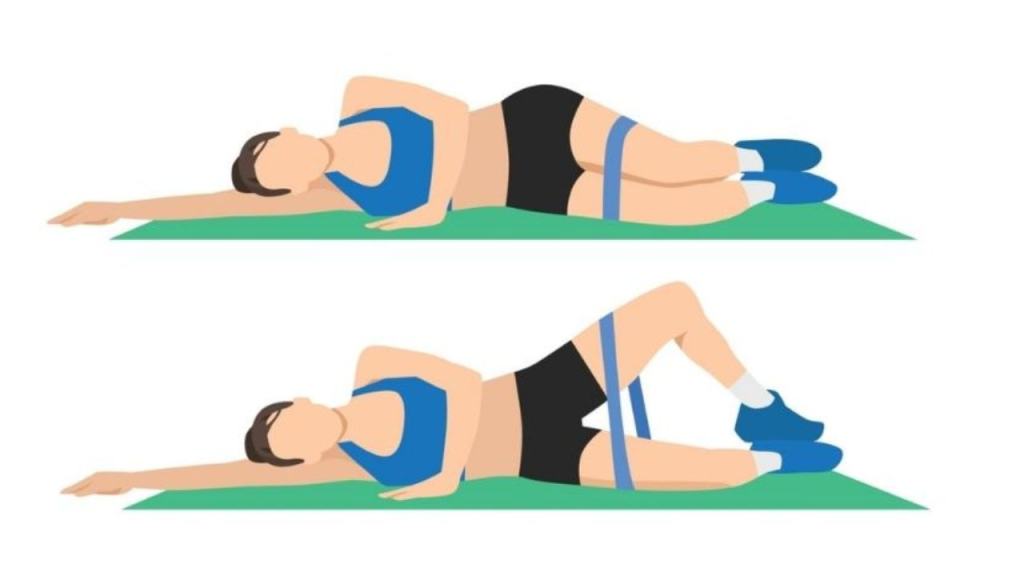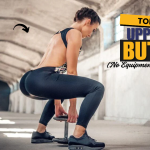Ever felt an annoying tightness in your lower back after sitting for too long or doing household chores?
You’re not alone—and the surprising solution isn’t always stretching your back. The real key to lower back relief lies just above your glutes. Strengthening the upper buttocks—the often overlooked gluteus medius and minimus—can offer instant support to your lower back, improve posture, and even reduce injury risk. The best part? You can do all these exercises without a single piece of equipment.

Did You Know? Studies show that weak glute muscles, especially in the upper buttock region, are one of the leading contributors to chronic lower back pain in adults over 30.
Let’s dive into five powerful, equipment-free exercises that specifically target your upper buttocks and immediately boost your spinal support.
What Can Happen After 30 Days of These Exercises
| Benefit | Description |
|---|---|
| Improved Lower Back Support | Stronger upper glutes reduce strain on the lumbar spine during daily movement. |
| Reduced Back Pain & Discomfort | Increased stability in the hips helps ease chronic tightness or aching. |
| Better Posture | Balanced glute strength encourages proper spinal alignment and standing posture. |
| Enhanced Hip Stability | Strong gluteus medius supports better balance and joint control. |
| Toned Upper Glutes | Consistent activation builds shape and firmness in the upper buttock area. |
| Improved Core Engagement | Exercises naturally recruit the core, enhancing midsection strength. |
| More Comfortable Sitting & Walking | Strong glutes relieve pressure from long sitting or walking sessions. |
| Increased Functional Strength | Everyday movements like climbing stairs or bending become easier and safer. |
1. Glute Bridge March
This variation of the traditional glute bridge activates your gluteus medius more intensely by challenging your balance.

How to do it:
- Lie on your back, knees bent, feet flat on the floor.
- Press your hips up into a bridge.
- While keeping your hips lifted, lift one knee toward your chest, hold it for a second, and lower it.
- Alternate legs like you’re marching.
Why it works:
Lifting one leg at a time forces your upper glutes to stabilize your pelvis, simulating the load your back experiences during walking and standing.
Myth Buster: Many believe squats are enough for glute strength. In reality, squats mainly target the lower glutes and hamstrings, leaving the upper glutes underdeveloped.
2. Side-Lying Hip Abductions
One of the simplest yet most effective isolation exercises for the gluteus medius.

How to do it:
- Lie on your side, legs straight.
- Slowly lift your top leg to about 45 degrees, pause, and lower it back down.
- Perform 12–15 reps per side.
Why it works:
It activates your lateral glutes, which are crucial for stabilizing your pelvis and relieving pressure from the lower spine.
Posture Tip: Keep your toes slightly pointed downward to isolate the glute more and avoid overusing your quads.
3. Clamshells
A small movement, a massive impact—especially for those who sit a lot.

How to do it:
- Lie on your side with knees bent at a 90° angle.
- Keep your feet together and lift your top knee like opening a clamshell.
- Slowly return to the starting position.
Why it works:
Clamshells strengthen the deep glute muscles that support your hips and lower back during lateral movement.
Interesting Fact: Runners often suffer from lower back pain due to weak gluteus medius. Clamshells are one of the top rehab exercises recommended by sports therapists.
4. Donkey Kick Pulses
This move builds endurance in your upper glutes while also engaging your core.

How to do it:
- Get on all fours.
- Lift one leg behind you with a bent knee, sole facing the ceiling.
- Pulse the leg upward in small, controlled movements (don’t lower it fully).
Why it works:
This dynamic move targets the upper and outer glute muscles while stabilizing the spine, helping reduce back strain over time.
Pro Tip: Keep your back flat and core tight throughout to avoid shifting the pressure to your lower back.
5. Wall Lean Leg Raises
A lesser-known move that packs a punch for glute activation and balance.

How to do it:
- Stand sideways next to a wall and lean against it with your forearm.
- Lift your outside leg straight out to the side without tilting your torso.
- Slowly return to the starting position.
Why it works:
This standing exercise trains your gluteus medius under load, mimicking real-life movement patterns like walking, climbing stairs, and shifting weight.
Fun Fact: Activating your gluteus medius helps prevent hip dips—a common concern for many fitness enthusiasts.
Final Thoughts: Why Your Upper Glutes Deserve the Spotlight
Lower back pain is often a downstream effect of weak hip stabilizers—and the upper buttock muscles are the secret heroes that silently support your spine. With just 10–15 minutes a day, these bodyweight exercises can help you build resilience in your core and glutes without the need for equipment or gym time.
Remember, the gluteus medius and minimus don’t just shape your hips—they are essential players in spinal health, posture, and mobility.
✔️ Bonus Tip: For best results, pair these exercises with a daily walking routine and avoid prolonged sitting. Your lower back will thank you.
Frequently Asked Questions (FAQs)
Why focus on the upper buttocks for lower back support?
The upper buttocks—primarily the gluteus medius and minimus—play a crucial role in stabilizing your pelvis and supporting the lumbar spine. When these muscles are weak, your lower back takes on extra stress during standing, walking, or lifting, often leading to discomfort or pain.
How often should I do these exercises?
For optimal results, aim to perform these exercises 3 to 5 times per week. You can combine them into a 10–15 minute routine, gradually increasing reps or duration as your strength improves.
Can these exercises help if I already have lower back pain?
Yes, these exercises are gentle, low-impact, and specifically designed to relieve pressure on the lower back by strengthening the muscles that stabilize your hips and spine. However, if you have a diagnosed injury or chronic condition, consult a physical therapist before starting any new exercise routine.
How long will it take to feel improvement?
Many people report feeling more supported and less stiff in their lower back after just 1–2 weeks of consistent training. Significant strength gains and posture improvements typically appear within 4–6 weeks.
Do I need to warm up before doing these?
Yes, a quick 3–5 minute warm-up—such as brisk walking in place, gentle hip circles, or dynamic leg swings—can increase circulation and prepare your muscles for activation, reducing the risk of strain.
Are these exercises suitable for beginners?
Absolutely! All five exercises are beginner-friendly, require no equipment, and can be modified for different fitness levels. They’re ideal for those just starting out, as well as those looking to improve core and glute strength without complex movements.
What if I don’t feel the burn in my glutes?
If you don’t feel engagement in your upper glutes, check your form. Small adjustments, like keeping your hips stacked or pointing your toes slightly downward, can significantly improve muscle activation. Slower, more controlled reps also make a big difference.
Can I do these exercises if I sit at a desk all day?
Definitely! In fact, these moves are highly recommended for people with sedentary lifestyles. They help counteract the negative effects of prolonged sitting, such as tight hips, weak glutes, and poor posture.





